Most people understand that plants are an important element in our environment, even if we never leave an urban setting – but some also believe that plants have the ability to clean the air and remove toxins.
What does the science say? And which plants are best? Here, we investigate.
Air Purifying Plants Guides
What does the science say?
Many people believe that plants have the ability to purify the air we breathe and to remove toxins – some species more than others – but what does the science say? Let’s look at that first.
In 1989, NASA carried out a now-famous experiment on plants to try to determine their ability to suck up pollutants from the air. The aim of the experiment was to see whether taking plants into space could be a good way of installing natural air filters into spacecraft.
The results of the experiment were intriguing – they seemed to suggest this was indeed the case. However, the experiments were carried out under laboratory conditions and in enclosed spaces; the research didn’t demonstrate that plants in homes have the same capability.
Later, another experiment was carried out to see whether plants were able to purify the air in a more natural environment.
Seven common houseplants were chosen, and their ability to remove one particular pollutant, benzene, was measured. (Benzene is just one of around 300 harmful volatile organic compounds – VOCs – commonly found in air.)
The results
The results of this second experiment were striking; it was shown that all seven of the plants tested had the capacity to remove benzene from the air.
The amounts removed and the rates at which the plants sucked up the benzene varied between species, but they all demonstrated significant air purifying capabilities.
However, the results were not quite as clear-cut as it might first appear. When the plants were tested for this capability at night, it was discovered that benzene was still being removed from the air.
Since in darkness, leaf stomates close and photosynthesis shuts down, it wasn’t possible that the plants were absorbing the benzene.
This being the case, the researchers suspected the microorganisms in the soil were responsible.
In order to test this, they set about investigating this idea by removing the plants and leaving only the pot containing the soil the plants had been growing in.
Was it the microorganisms in the soil?
When the results came back, they showed that the pots of soil had also removed benzene from the air; however, interestingly, they didn’t remove as much. It would seem that while plants and soil both remove benzene from the air, they are more powerful when working together.
Although this experiment focused specifically on benzene out of the 300 or so VOCs known to exist, there is no reason to think plants don’t have the same effect on at least some of the others. This has also been backed up by further work.
Another experiment
Another experiment attempted to look at the effects of a wider range of plants across a broader spectrum of VOCs. To this end, 28 plants were chosen and their effects on five airborne pollutants were tested.
Of these 28 plants, four were found to have “superior removal efficiency” for all five pollutants while one other was able to purify the air of four VOCs. One plant efficiently removed three pollutants, one worked for two and one plant was able to rid the air of one.
Presumably, the other plants in the test either purified the air less effectively or had no purification abilities at all. Read on to find details of all these plants in our list below.
Conclusions from the second experiment
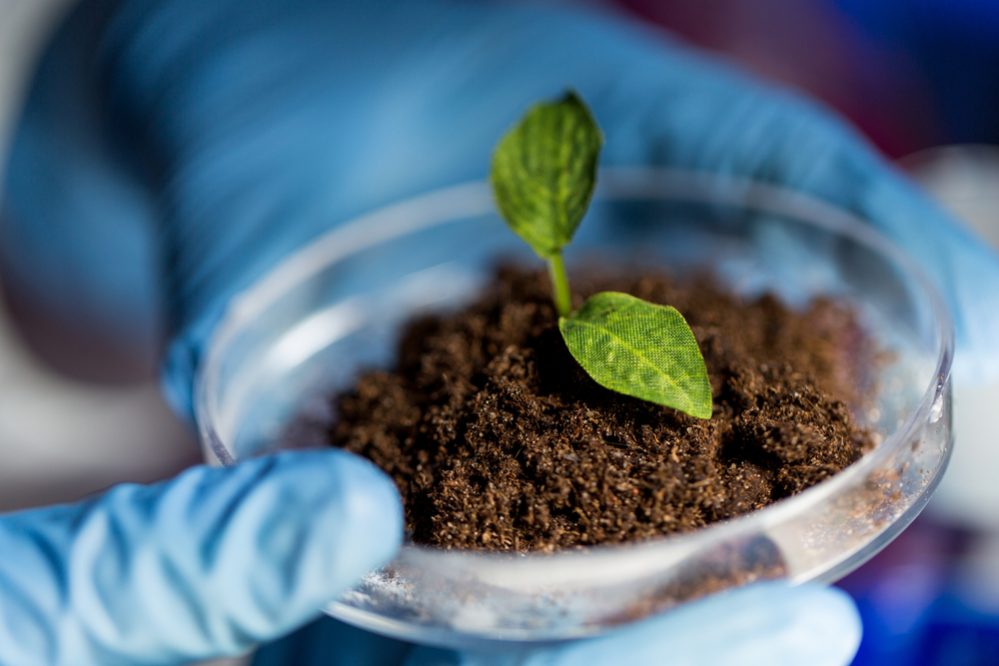
We can draw a couple of tentative conclusions from this second experiment:
- Several plant species have the ability to purify the air
- The effectiveness of the air purifying ability varies between species
- Different plant species purify the air of different pollutants
- The best way to purify the air is to have several different species present
Let’s just reinforce this last point again. This experiment seems to show – and its authors also suggest – that if you want to purify the air in your home with plants, the best way is not to rely on one species but to install several different types of plant.
So should you buy plants to clean your air?
The results of the experiments are still not conclusive enough to say that putting plants in your home will remove pollutants from the air. All we can say with certainty is that under laboratory conditions, it has been demonstrated that some plants have the ability to remove some pollutants.
More work is needed, but so far, the results indicate that having plants does have at least some positive effect on air quality. At the very least, it certainly won’t hurt you to have a few plants to share your living space with.
Furthermore, even if the air purifying effect is minimal, it has been scientifically proven that the presence of plants in your environment can help relieve physiological and psychological stress and help alleviate symptoms associated with modern urban living.
If this is the case, there’s no reason why you wouldn’t want to have plants in your home – they are known to be good for your wellbeing even if their air purifying abilities are as yet unconfirmed.
Which plants should you put in your house to clean the air?
As we have noted, the best advice is to place a range of species of air-purifying plants in your home to ensure you create the most powerful effect. Here is our list of the most effective detoxifying plants around.
1. English Ivy

Image: eartheasy
When talking about plants with air purifying capabilities, English ivy is one of the most commonly mentioned. It is an attractive climbing plant that will send out long tendrils if there is nothing for it to attach itself too. They are also very easy to keep and don’t need much watering.
2. Pothos (Devil’s Ivy)

Pothos, commonly known as devil’s ivy, is a group of plants native to Asia and some Pacific islands. They are known to be able to remove toxins from the air and are also very forgiving houseplants – you would have to neglect one quite seriously for it to die on you!
3. Rubber Tree
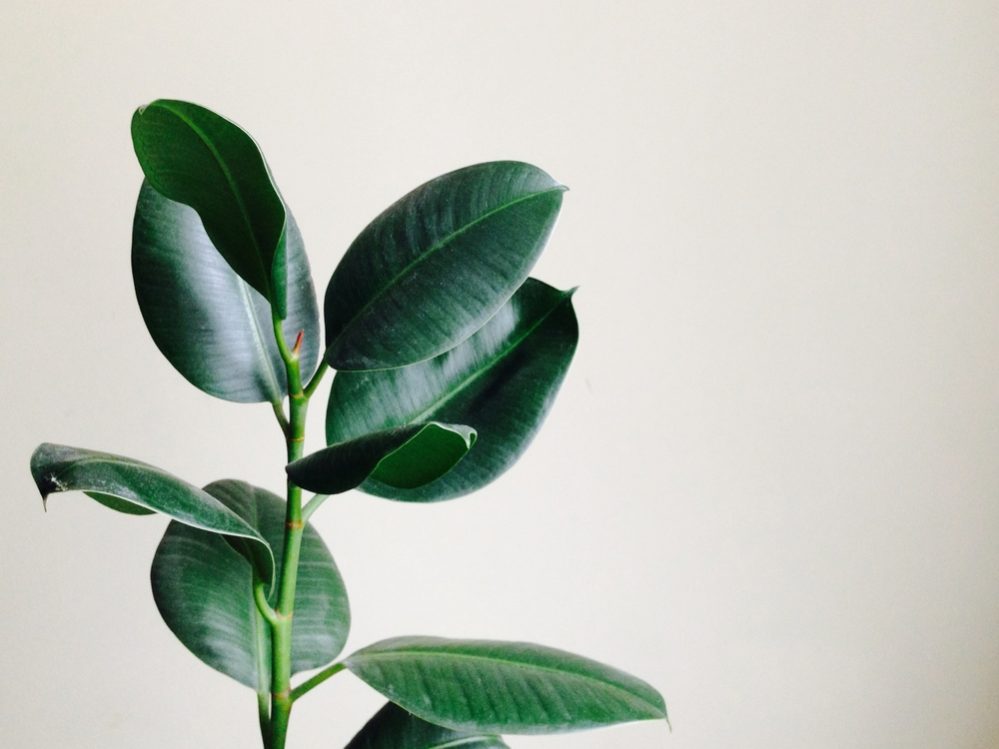
The rubber tree is also native to Asia. It is considered a powerful air purifier and is also a tough survivor, meaning it won’t need too much looking after. With its dark green waxy leaves, it’s an attractive plant – but they grow big, so you might need to prune it before it develops into a full tree.
4. Janet Craig
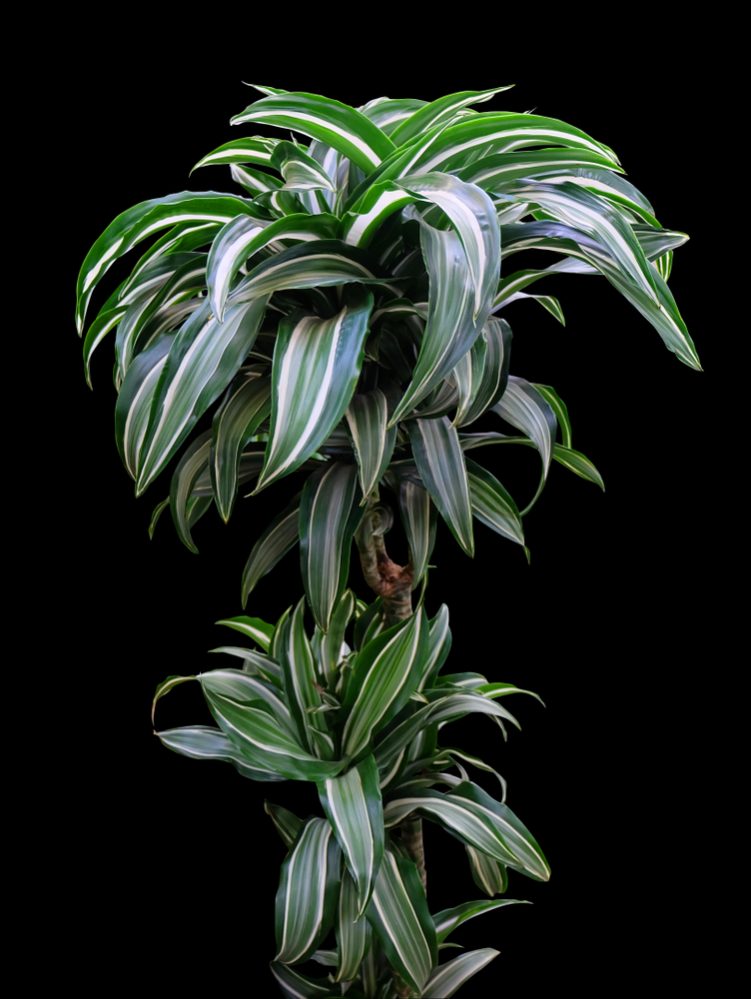
The Janet Craig resembles the rubber tree somewhat in appearance, having similar foliage. However, these plants won’t grow quite as big and have long been a favored office plant due to their minimal care requirements. They are considered a good plant for air purification.
5. Peace Lily
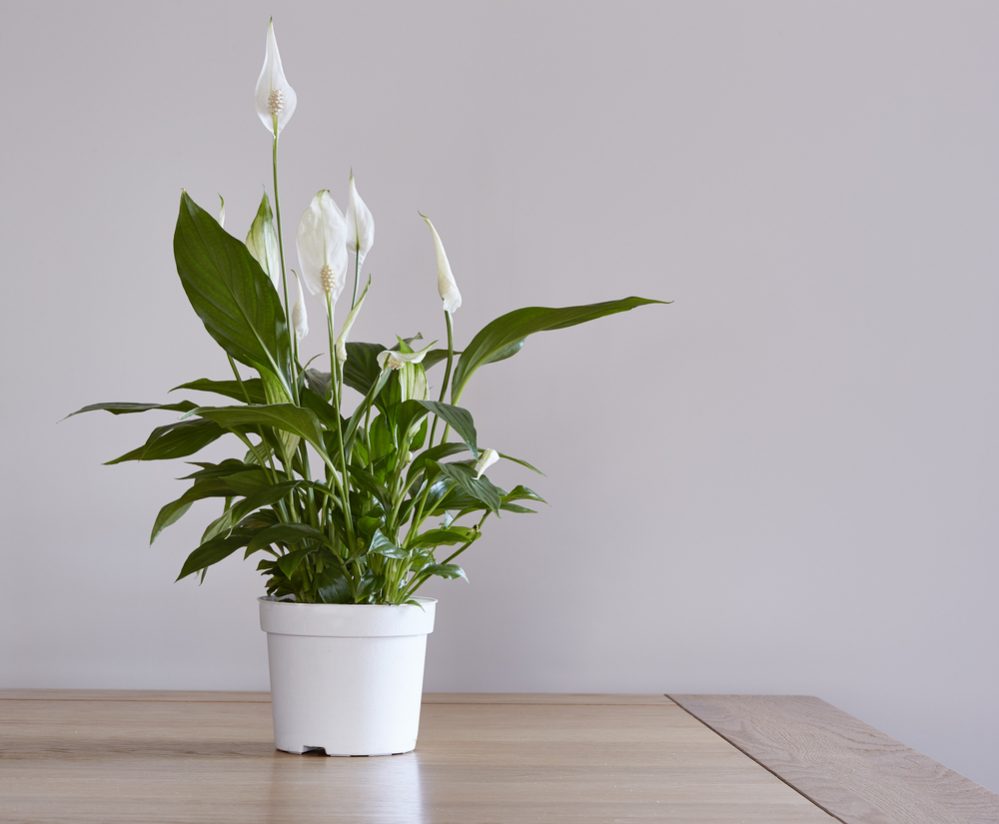
This is another plant that is commonly cited as one that can help clean your air. This was one of the species involved in the experiment that tested the detoxification properties of seven plants – and it was shown that the peace lily was effective at removing benzene from the air.
6. Boston Fern

Boston ferns are a little harder to keep than some of the other plants we’ve mentioned, but these plants excel in removing formaldehyde from the air. They are a very attractive plant and can add a burst of green to an interior space; feed weekly during the growing season.
7. Kentia Palm
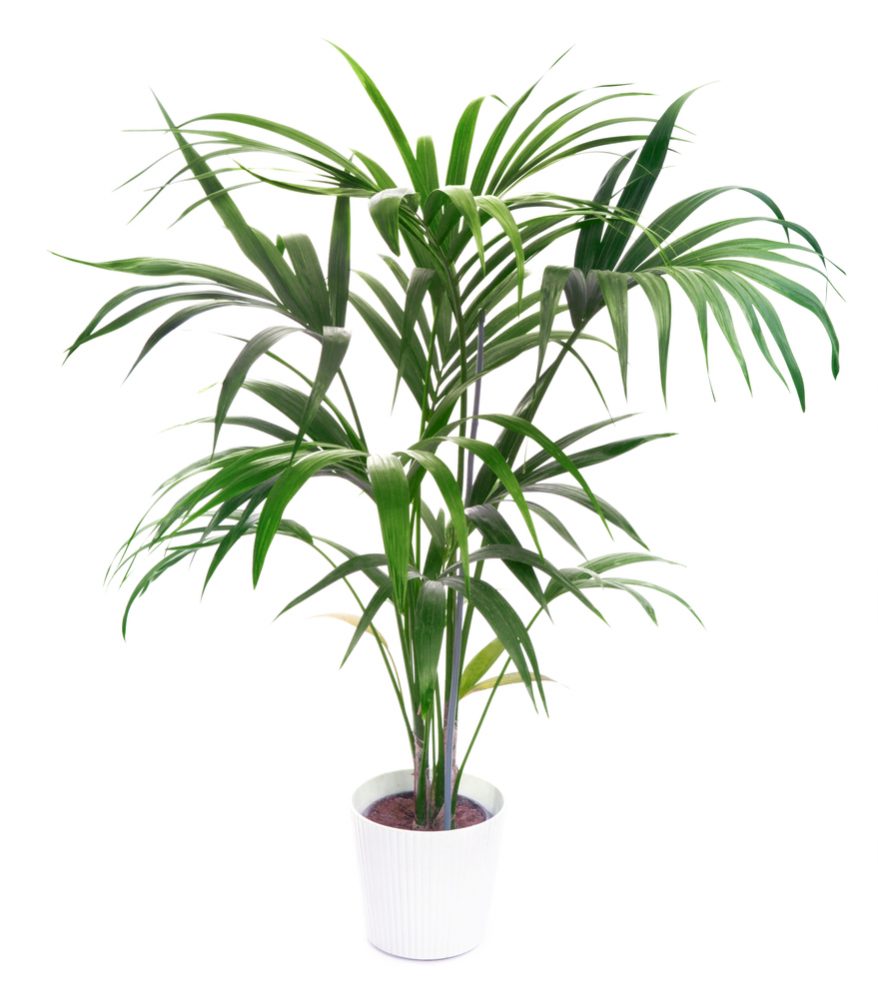
This was one of the seven plants that featured in the test for the removal of benzene, in which it proved its detoxification capabilities. It is actually a palm tree that can grow to up to 30 feet – so as a houseplant, it will need pruning. However, keeping one is an effective way to help enjoy clean air.
8. Dragon Tree
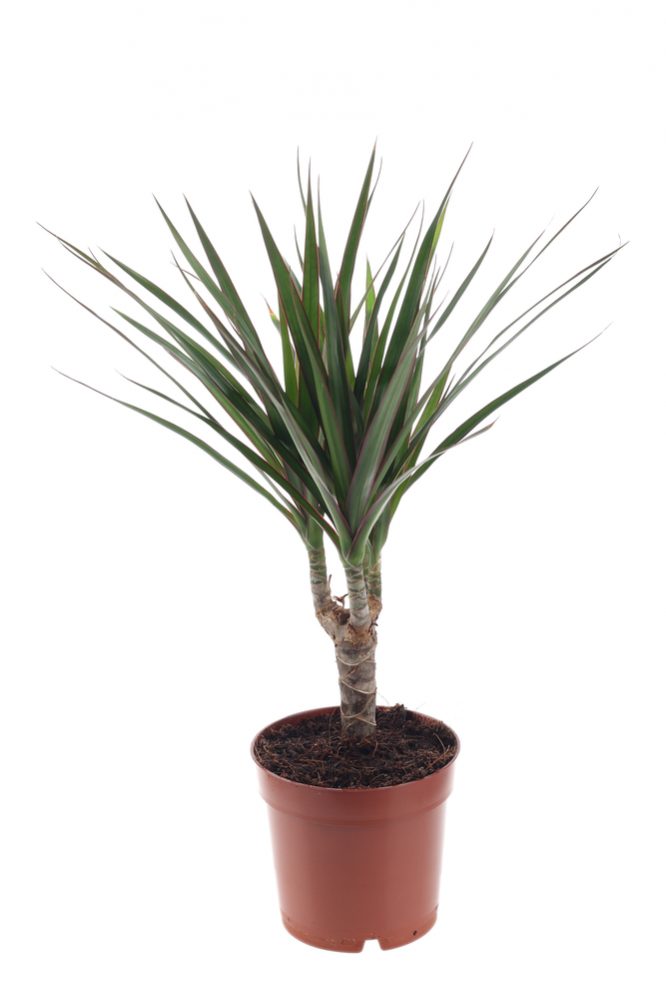
The dragon tree (specifically Dracaena reflexa) was another of the seven plants in the experiment, and as such, it is known to remove benzene from the air. This plant is related to the Janet Craig; it is another attractive but hardy plant that is easy to keep and one that will help purify your air.
9. Schefflera amate

This plant is also known as the umbrella tree and was tested for its ability to absorb benzene – tests which confirmed it does indeed have this capability. It is a tropical plant that is easy to keep as a houseplant; it will add an exotic element to your home while helping to keep your air clean.
10. Hemigraphis alternata

The Hemigraphis alternata, also known as red ivy or the waffle plant is native to the Indonesian island of Java. In the third experiment, it was one of the four plants with the highest rate of VOC absorption and was able to absorb all five of these pollutants from the air.
11. Hoya carnosa

Hoya carnosa, known as the porcelain flower or wax plant, was also tested in the third experiment and demonstrated a good ability to remove all five VOCs from the air. These popular houseplants are hardy little guys; they enjoy plenty of light but can survive in low light and low temperatures.
12. Tradescantia pallida
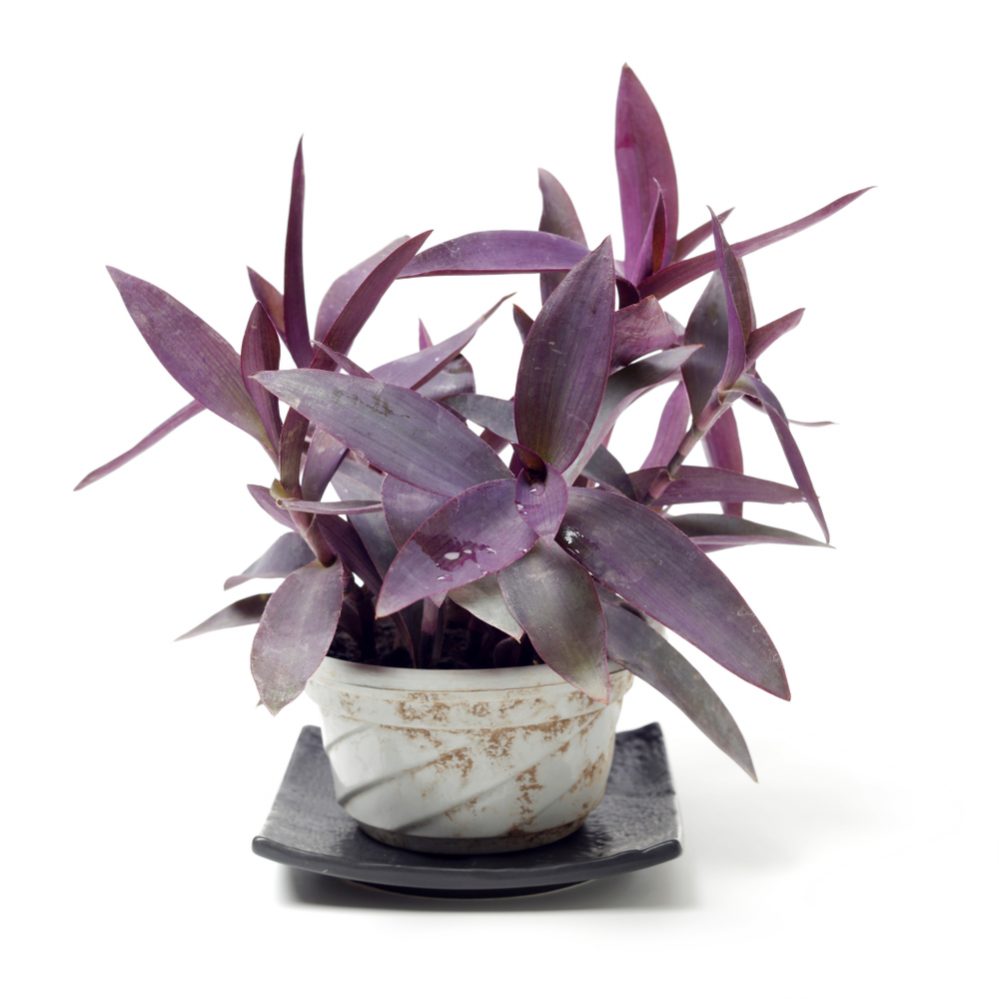
This striking plant, originally from northeast Mexico and often known by the name of wandering jew, is a species of spiderwort known for its distinctive purple color – from which it gets its other name, “purple heart”. It was proved to be effective in removing four of the five pollutants it was tested for.
13. Fittonia argyroneura

Also known as the nerve plant, this is a tropical plant native to South America. It is a popular houseplant due to its striking patterned foliage – and in testing, it was shown to be effective at removing benzene, toluene, and TCE from the air.
14. Ficus Benjamina (Weeping Fig)
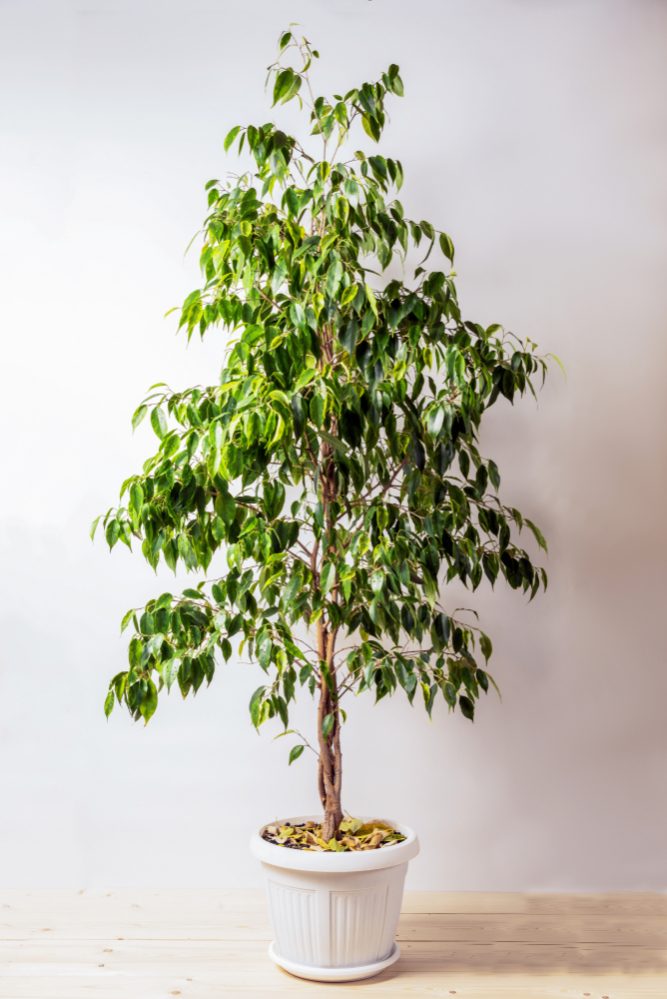
The weeping fig was tested for its ability to purify the air and was found to be effective at removing octane and α-pinene. It can grow into a large tree but if properly pruned and cared for, it can also make a handsome – if somewhat large – houseplant.
15. Polyscius fruticose
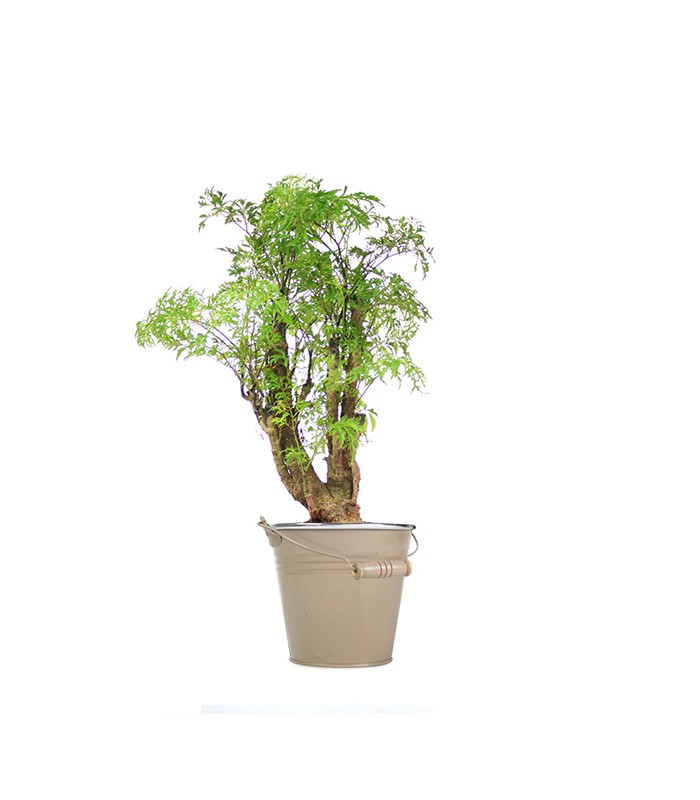
Known as Ming aralia, this dwarf tree from India was once a popular houseplant but is less commonly found these days. This is a shame since its delicate form and light foliage make it an attractive houseplant. In the experiment, it was shown to be good at cleaning the air of octane.
16. Dwarf Date Palm
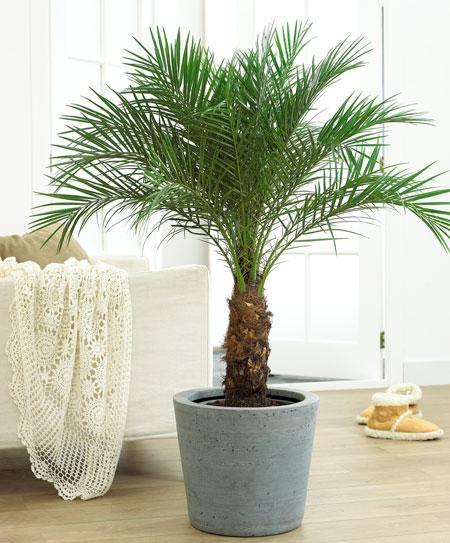
Many palm trees are thought to have air-purifying qualities, and the dwarf date palm is one of them. This is one of the smallest palms available, making it suitable for keeping indoors – although small is a relative term since they still reach 6-10ft. They are believed to remove formaldehyde and xylene.
17. Philodendron

Philodendrons are known for being one of the easiest houseplants to care for, making them a popular choice for brightening up many homes. They are also thought to help clean the air by removing formaldehyde.
18. Spider Plant
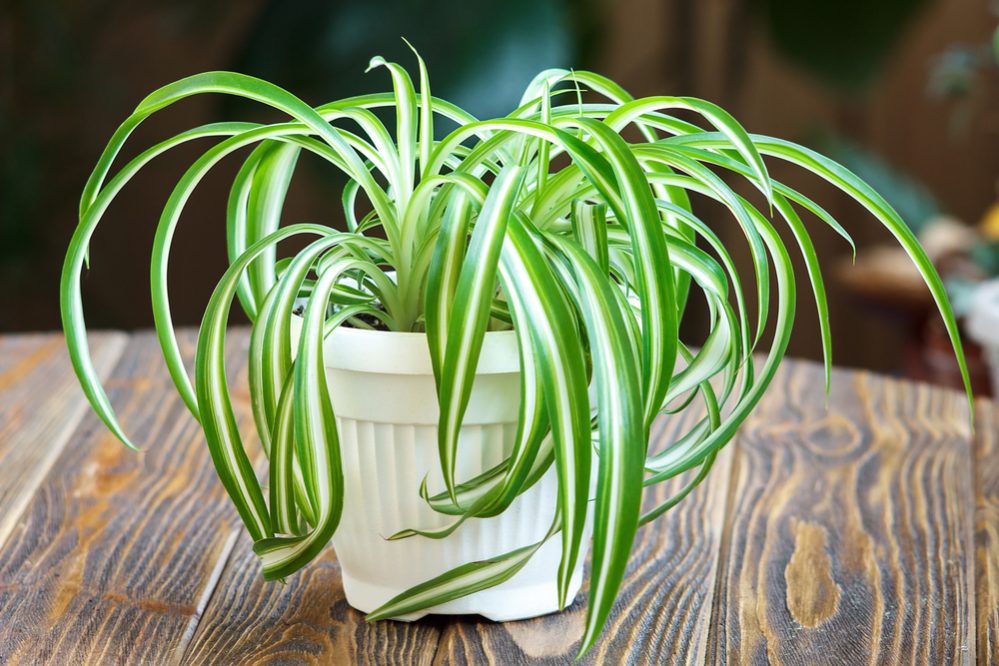
Spider plants have long been a favorite in homes due to the fact that they are so easy to keep. They don’t demand lots of care and can brighten up a somber room. They are also thought to remove formaldehyde and xylene from the air.
19. Chinese Evergreen

As may fairly be guessed from the name, this is a native of East Asia. It is a popular feature in many homes due to its pretty, colored leaves and the fact that it is an undemanding plant. It is also thought to help detoxify the air by sucking up benzene, carbon monoxide, formaldehyde and more.
20. Areca Palm

Image: brightside
If you are into palm trees, the areca palm is another relatively small option that can grow indoors. It is a gorgeous palm tree in its own right, but some believe it is also capable of removing benzene, carbon monoxide, formaldehyde, trichloroethylene, xylene and other pollutants from the air.
21. Aloe Vera

This plant is well-known for its medicinal properties – it is especially good for treating sunburn – but it is also believed to be able to remove formaldehyde from the air. They are easy to keep and don’t require too much attention, making them a popular and attractive houseplant.
Not 100% proven – but keeping plants in your home can’t hurt
Although it has not been proven conclusively that plants make a real difference to air quality in our homes, evidence suggests that there is a good chance they can. And even if they don’t, there are other reasons for keeping plenty of houseplants – so why wouldn’t you want to?
Do you believe plants can help keep the air clean? Which ones do you have in your home? Do you have them for purification or merely for decoration? If you have something to add, please leave us a message – we love hearing from you. And if you enjoyed reading, please don’t forget to share!
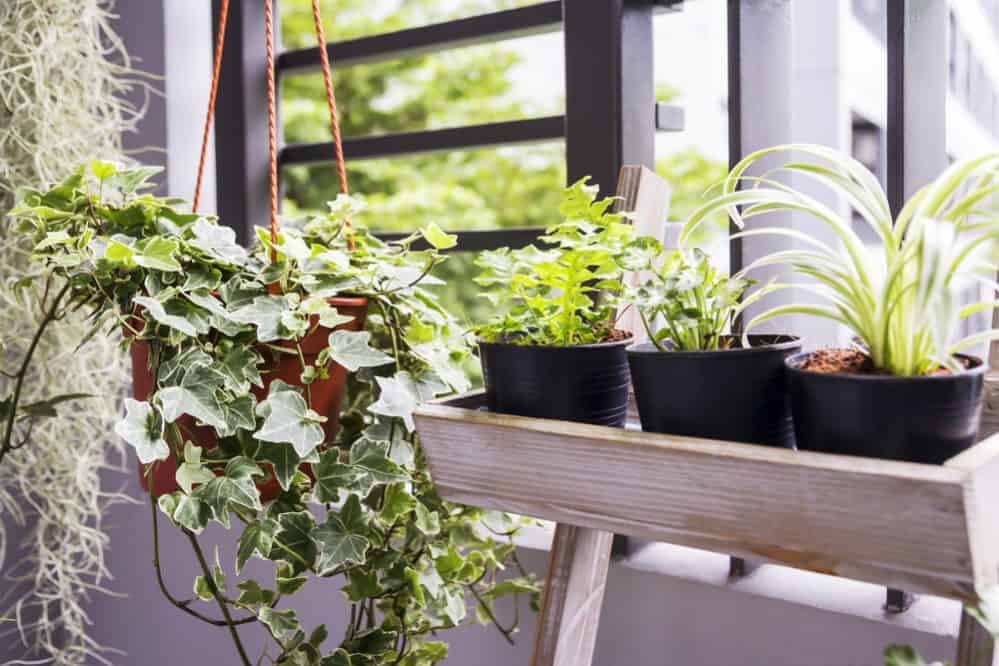
Leave a comment